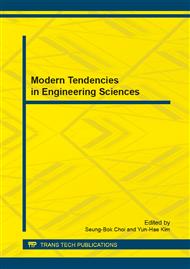p.321
p.331
p.335
p.342
p.346
p.350
p.354
p.360
p.365
Gas Turbine Engines Safe Life Criterion Analysis
Abstract:
Life concepts have evolved and improved since the early period of the gas turbine engine. Early on, passing a 150-h test was the main "pass or fail" criteria used to qualify a new engine design to enter production and service. Engine life development and life prediction techniques evolved mostly in response to durability problems, customer demands, and/or regulatory involvement. The safe life and damage tolerance concepts have been the two most widely used design methods for producing components to meet life requirements. More recently, however, the combination of both life concepts is the preferred life method for both commercial and military and is required by the military in their engine structural development programs.
Info:
Periodical:
Pages:
346-349
Citation:
Online since:
February 2014
Authors:
Price:
Сopyright:
© 2014 Trans Tech Publications Ltd. All Rights Reserved
Share:
Citation:


